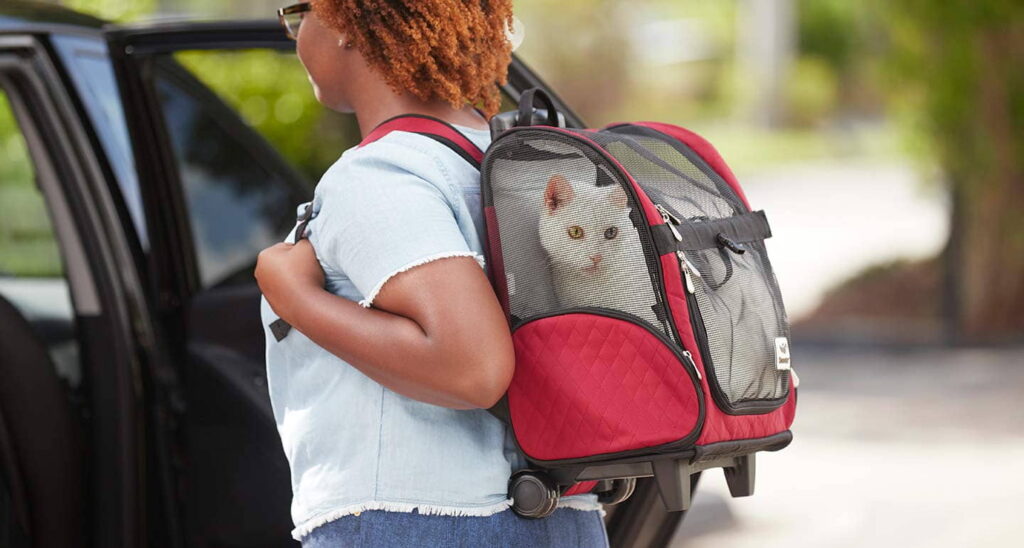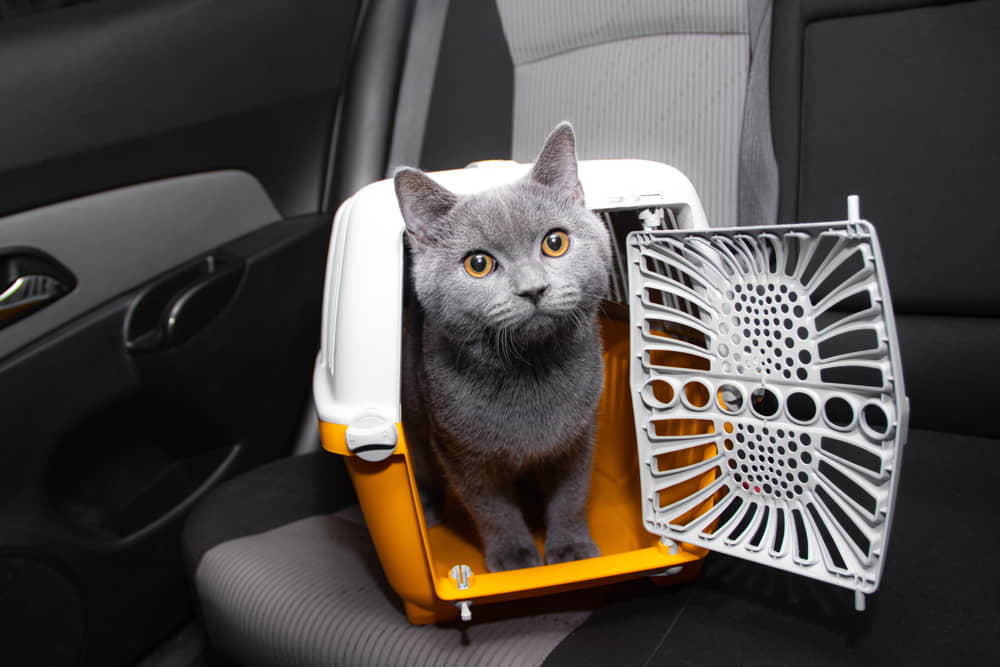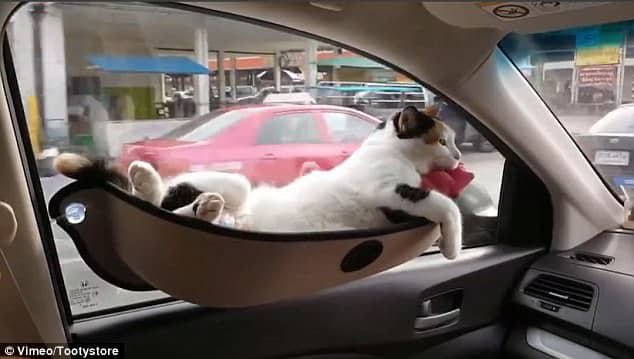Part 1: Get Your Cat to Like the Car

For many cats, riding in the car is unpleasant. But for some, it’s the worst thing that could ever happen to them (according to them, at least).
Before embarking on a road trip, first spend some time getting your cat to like the car. Then, once your cat is comfortable in his carrier, the next step to reducing the stress of vet visits (or travel in general) is to create positive car associations for your cat. The process takes some time and patience, but it’s worth it. Here’s how:

- Start young: Kittens usually adjust to new experiences and surroundings more easily than an adult or senior cats, so start the travel-training process as early as possible. If your cat is past kittenhood, don’t worry: Adult and senior cats can still learn to tolerate car rides.
- Practice driving at different speeds and around corners: After your con’s a pro at driving around your neighborhood, try driving one exit on a highway and/or a short distance on a winding road. Symptoms include drooling, nausea, vomiting, and diarrhea. If you suspect that your cat is getting motion sickness, your vet may recommend a medication such as Dramamine to treat nausea. (Never give your cat medication without inquireing your vet first.)
- Practice getting in the car: Bring your cat, secured safely in his carrier, out to your car (with its engine off). Strap him in with a seatbelt and sit next to him. If your cat is calm, give him his favorite treat. After he’s eaten the treat, bring him back inside and let him out. If he seems upset or tries to get out, don’t give him a treat and try again with less time in the car. When you bring him back into the house, let him out calmly and without fanfare.
- Practice turning on the engine: After your cat learns that sitting in the carrier in the car is okay, try turning on the engine before giving him treats. Add this to your routine, rewarding calm behavior with treats and stopping when you observe nervous behavior.
- Practice driving around the block: Once your cat can stay calm while you have the engine on for some minutes, try driving around the block, then give your cat a treat. Repeat, gradually increasing the amount of time he has to wait in the car until he gets treats. If your cat did well on that short trip, repeat the process, gradually increasing the distance you drive and rewarding your cat for staying calm. Having a second person to give your cat treats while you drive can help.
- Rule out motion sickness: If your cat already has difficulty traveling in the car, ask your vet whether your cat could be getting motion sickness. Once you’re in a safe place to stop, pull over and give your cat a delicacy if he’s done well.
- Practice driving to your vet’s office: If your cat’s like mine, he can tell where you’re headed from the twists and turns of the road. So get him used to the route you take to and from the vet’s office by following a same routine described above, rewarding calm behavior.

Part 2: Road Trip Checklist
- Talk with your veterinarian: Check that your cat is healthy enough to travel and learn what to do if your cat gets carsick.
- Check identification: Check that your cat is wearing an easy-to-read tag on his collar. Don’t forget to also check that your cat’s microchip information is up-to-date.
- Plan pit stops: Plan to stop every 2-3 hours to provide your cat water and access to the litter box.
- Pack extra supplies: If your cat needs any special food or medicines, be sure to pack extra to avoid emergencies.
- Confirm your hotels: Call and confirm that any hotels where you’ll be staying will also allow your cat.
- Prepare for stress: If your cat tends to be easily stressed, talk to your vet about possible medical help.
- Before you drive off: Exercise your cat by playing with her before you leave. Also, give her some food and water (unless your veterinarian directs you to do otherwise).
- Keep your cat in the carrier: Restrain your cat while in the car avoid accidents and keep him safe. Worried that your cat will hate the carrier? Try these steps to help your cat like his carrier at the start of your travel planning.
- Never leave your cat in the car! Cars heat up fast and in only a matter of minutes, your cat’s life could be in danger. Click on the image above to find out more about why you should never leave a pet in a car.

Wondering about Therapy Cats? Check it out on our latest post!


0 Comments